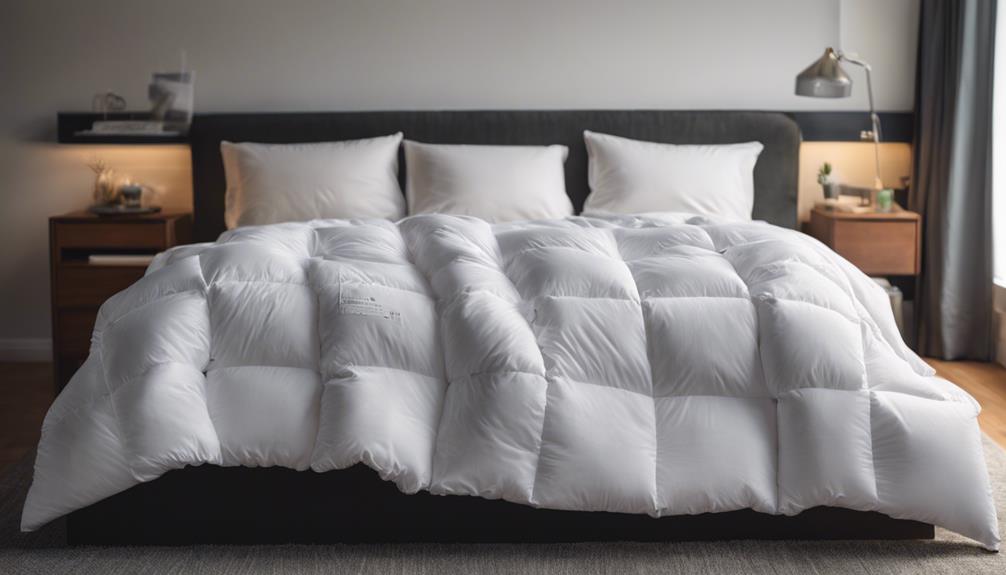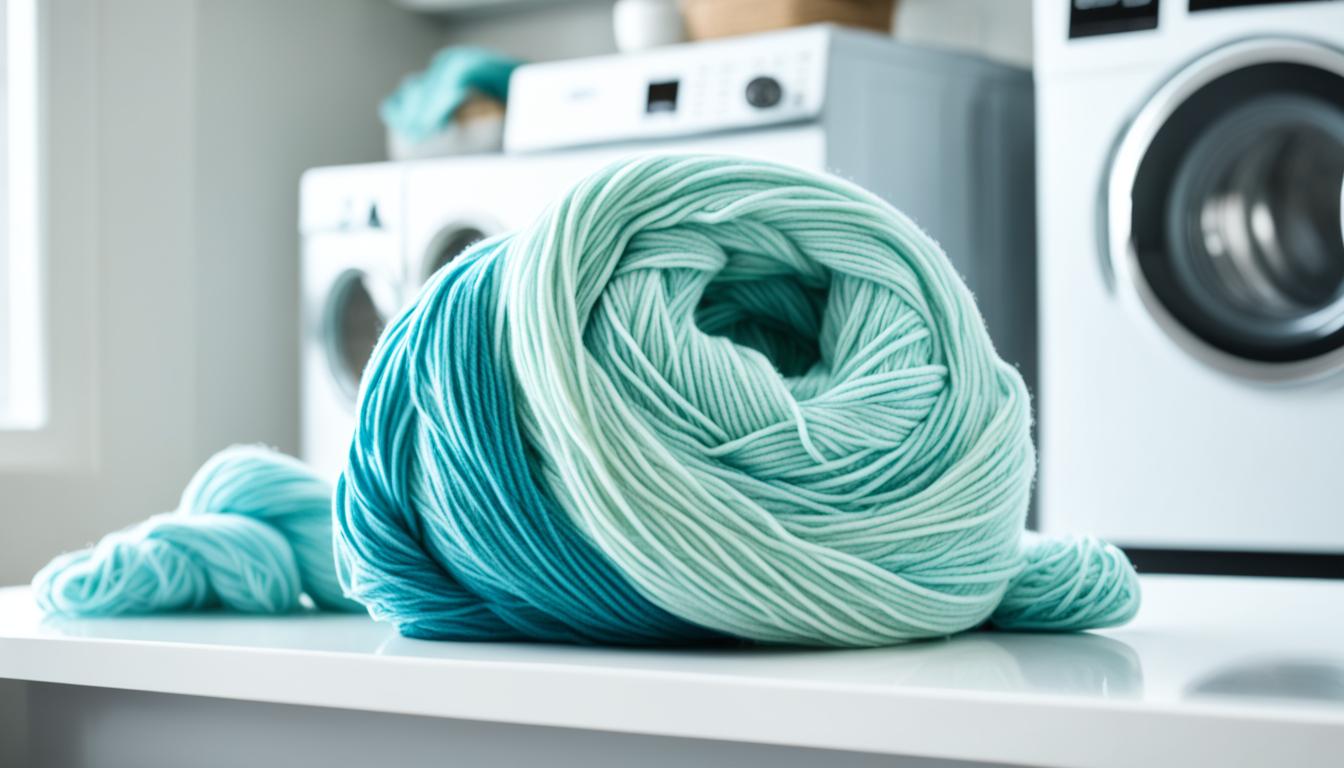When choosing a down comforter, it is important to take into account the fill power for maximum comfort. Fill power can range from 500 to 800, which indicates the fluffiness and warmth of the comforter. A higher fill power means a lighter comforter with better insulation. The ideal range for balanced warmth without feeling heavy is typically between 600 to 700. Higher fill power offers superior insulation and durability, while considering the climate is also important. Opt for 500-600 fill power for warmer regions and 700+ for colder areas. Fill power directly affects the warmth and quality of the comforter, which in turn impacts overall comfort. Understanding fill power is crucial in choosing the right level of warmth and insulation for a restful night’s sleep. Making a good fill power selection is essential for a comfortable night’s rest.
Key Takeaways
- Optimal fill power range is 600-700 for balanced warmth.
- Higher fill power offers increased insulation and durability.
- Fill power choice influences comforter's plushness and coziness.
- Climate dictates fill power selection for ideal insulation.
- Warmer climates suit 500-600 fill power, colder climates 700+.
Fill Power Explained
Fill power, a key metric in evaluating the quality of down comforters, directly correlates with their fluffiness and insulation capabilities. The higher the fill power, the better the quality of the comforter.
Fill power values typically range from 500 to 800 in down comforters, with a fill power of 600-700 considered best for balanced warmth. Premium quality comforters may boast fill power of 700+ for superior insulation in colder climates.
When considering fill power, it's crucial to understand that a higher fill power signifies loftier down clusters that can trap more air, providing increased warmth without adding weight. This results in a lightweight yet cozy comforter that effectively retains heat.
By selecting a comforter with the appropriate fill power, you guarantee a good balance between warmth and weight, leading to a comfortable night's sleep.
Importance of Fill Power
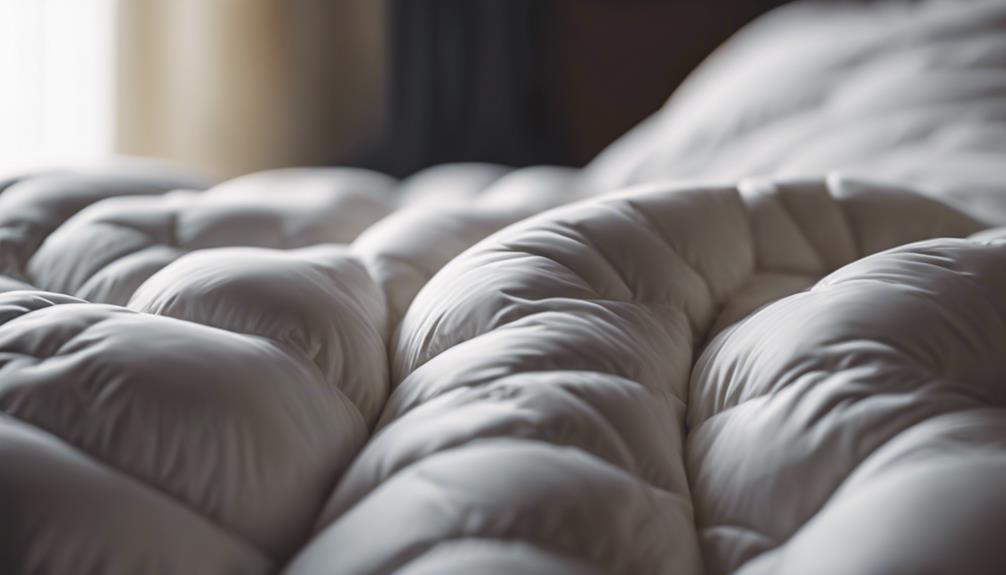
Understanding the significance of fill power is essential when selecting a down comforter for maximum warmth and comfort. Fill power means the fluffiness and quality of the down within the comforter. In simple terms, the higher the fill power, the better the quality, loft, and longevity of the comforter. More air gets trapped in the down clusters with higher fill power, enhancing insulation and ensuring that the comforter keeps you warm.
To illustrate the impact of fill power visually, consider the following table:
| Fill Power Level | Quality of Comforter | Insulation Capability |
|---|---|---|
| Low | Inferior | Less efficient |
| Medium | Decent | Adequate |
| High | Superior | Excellent |
Choosing a down comforter with an appropriate fill power is essential. The fill power influences how long the comforter will retain its firmness over time and directly impacts the overall warmth and comfort it provides.
Optimal Fill Power Range
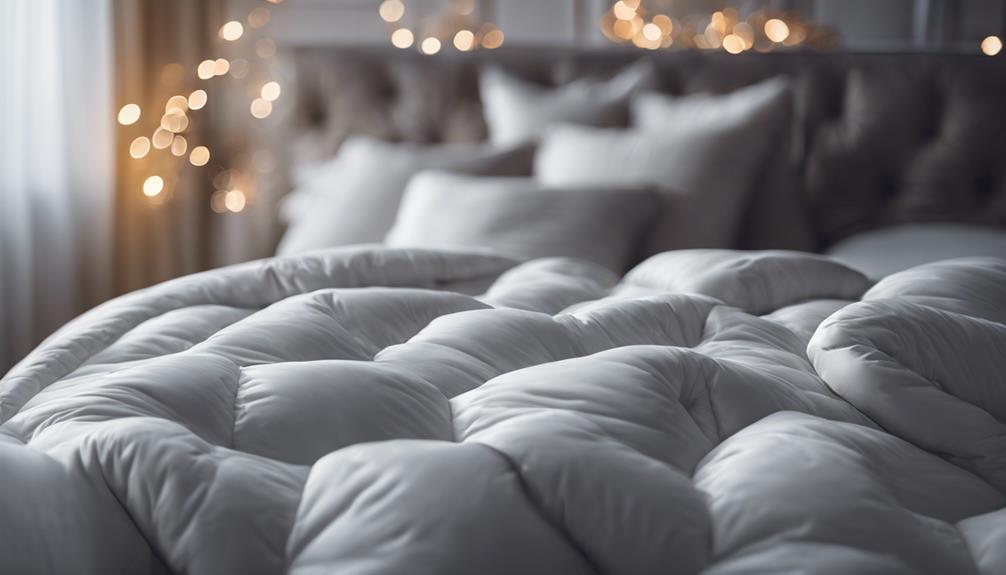
When considering the ideal fill power range for a down comforter, it's important to look for numbers between 600 and 700. This range offers a good balance of warmth and insulation, suitable for various climates.
Down comforters falling within this fill power range provide a comfortable sleep experience with the right amount of loftiness and weight.
Fill Power Ranges
Exploring the ideal fill power ranges for down comforters reveals the key to achieving peak warmth and insulation. When considering fill power ratings, here's what to keep in mind:
- 600-700 Fill Power: Suitable for most climates, offering a good balance of loft and coziness.
- Higher Fill Power above 700: Recommended for colder climates or maximum warmth and fluffiness.
- Fill Weight: Influences the overall weight and warmth of the comforter.
- Fill Quality: Affects the comforter's ability to trap air and provide insulation.
Understanding these ranges helps in choosing a down comforter that suits your comfort needs and climate preferences perfectly.
Choosing the Best
Moving on to selecting the best fill power range for your down comforter, it's important to take into account factors like climate and personal warmth preferences.
Opting for a fill power between 600 and 700 guarantees a good balance of insulation and weight, suitable for various climates. This range provides quality warmth without feeling too heavy on the body.
For colder regions, a higher fill power of 700 or more is recommended to enhance the comforter's insulation properties. On the other hand, if you live in a warmer climate or prefer a lighter cover, a fill power below 600 might suffice.
Consider your specific needs and the level of warmth you desire when choosing the fill power for your down comforter.
Benefits of Higher Fill Power
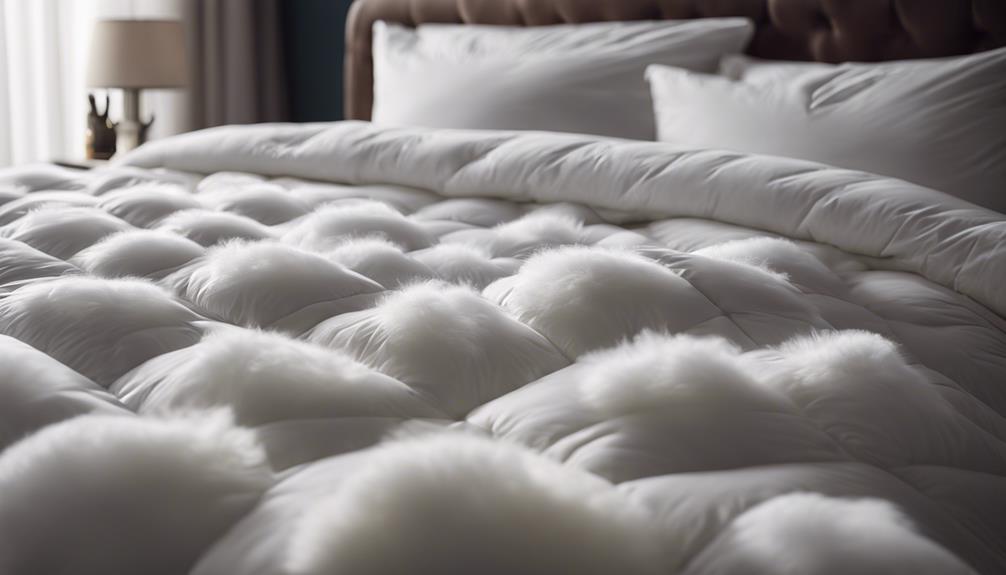
With higher fill power in a down comforter, one experiences superior insulation quality that guarantees maximum warmth in colder climates. Here are the benefits of opting for a down comforter with higher fill power:
- Increased Insulation: Higher fill power, such as 700+, provides better insulation, ensuring peak warmth during chilly nights.
- Lightweight Comfort: More fill power means larger down clusters, making the comforter lighter while still offering superior warmth.
- Enhanced Durability: The loftiness associated with higher fill power results in a more resilient comforter that maintains its quality over time.
- Overall Quality: Choosing a down comforter with higher fill power ensures exceptional quality in terms of loftiness, warmth, and comfort, making it a worthwhile investment.
When considering a down comforter, especially for colder climates, the benefits of higher fill power can't be overstated. It's crucial to prioritize warmth, comfort, and quality to enhance your sleeping experience.
Factors Influencing Fill Power Choice
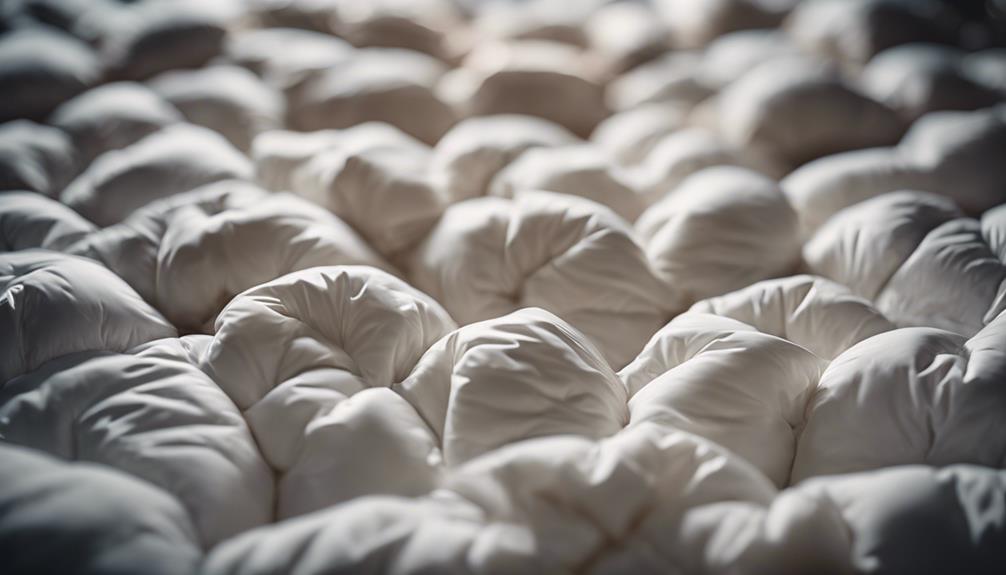
When considering the fill power choice for a down comforter, it's important to assess specific factors that directly impact the insulation and overall quality of the bedding.
Fill power, which ranges from 600-700 for moderate climates and 700+ for chilly environments, plays a vital role in determining the warmth and comfort provided by the comforter. Higher fill powers are indicative of better insulation and loftiness in down comforters, resulting in increased fluffiness and superior warmth retention.
The fill power directly influences how plush and cozy the comforter feels when in use. Hence, selecting the appropriate fill power is essential in achieving the desired level of warmth and comfort for a restful night's sleep.
Choosing Fill Power for Climate
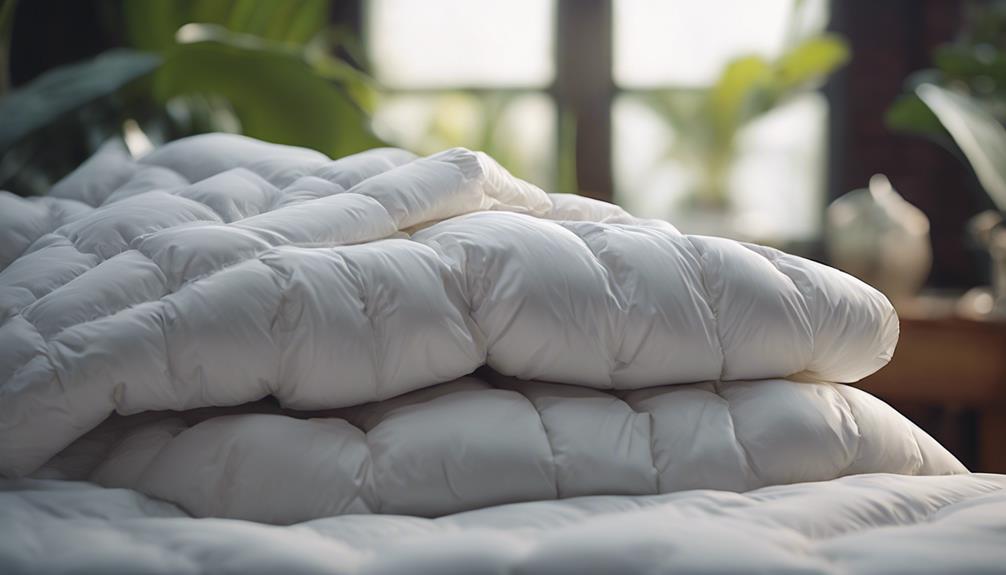
When choosing the right fill power for your down comforter, it's important to take into account the climate you live in.
Warmer regions typically benefit from a fill power of 500-600, while moderate climates may require 600-700 for best warmth.
For colder areas, a fill power of 700 or higher is recommended to guarantee top-quality insulation and coziness.
Climate Impact on Fill Power
Considering the climate's impact on fill power is essential when selecting the right down comforter for maximum warmth and comfort. Different fill powers are suited for various climates, ensuring ideal insulation and coziness.
Here's a breakdown to help you choose the perfect fill power based on your climate:
- Fill power of 500-600 is ideal for warmer climates due to lighter insulation.
- Best warmth in moderate climates is achieved with 600-700 fill power down comforters.
- For chilly climates, consider 700+ fill power down comforters for the highest quality insulation.
- Fill power directly impacts the warmth and comfort level of a down comforter based on climate, so choose wisely for ultimate comfort.
Matching Fill to Weather
How can we guarantee our down comforter provides peak warmth and comfort in varying climates through selecting the appropriate fill power?
Fill power plays an essential role in determining the insulation level of a comforter. For warmer climates, a fill power of 500-600 is ideal, offering adequate warmth without overheating. In milder conditions, this range provides the right balance of comfort.
If you're looking for peak warmth in varied climates, consider a fill power between 600-700. For colder weather, opt for a fill power of 700 or higher to ensure superior insulation and coziness.
Fill Power for Maximum Warmth

When seeking maximum warmth in a down comforter, prioritize a fill power of 700 or higher for superior insulation quality. Fill power directly correlates with the amount of space one ounce of down occupies, indicating its ability to trap heat effectively.
Here are some key points to keep in mind for achieving maximum warmth:
- Insulation Quality: A fill power of 700 or higher signifies excellent insulation for exceptional warmth.
- Cold Climate Suitability: Ideal for chilly environments, a fill power of 700+ ensures cozy comfort in the coldest conditions.
- Improved Warmth: Higher fill powers provide better warmth retention due to increased loftiness and air-trapping capacity.
- Personal Preference: Selecting a fill power above 700 caters to individuals who prioritize warmth and desire a luxurious, toasty feel.
Understanding the significance of fill power, especially a rating of 700 or higher, is important in choosing a down comforter that offers maximum warmth and comfort in colder climates.
Fill Power Recommendations
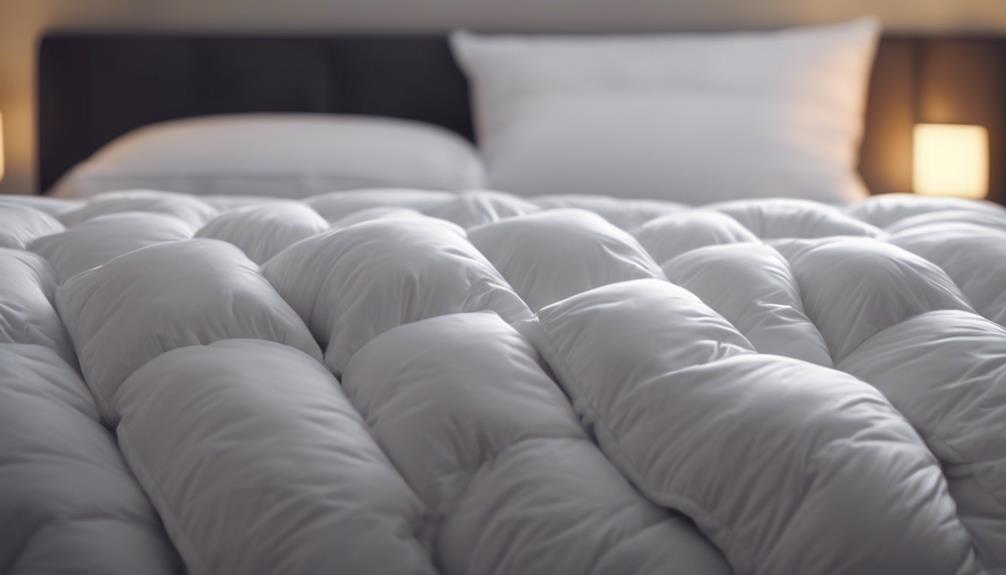
For those seeking guidance on fill power choices for down comforters, it is important to understand the recommended ranges based on climate preferences and insulation needs. Fill power plays an essential role in determining the warmth and quality of a down comforter. Here is a general rule of thumb for fill power recommendations based on climate:
| Climate | Fill Power Range |
|---|---|
| Warmer Climates | 500-600 |
| Balanced Insulation | 600-700 |
| Colder Climates | 700 and above |
In warmer climates, a fill power of 500-600 provides adequate insulation without being too heavy. For a balance of weight and warmth, opt for a fill power of 600-700. In colder climates where maximum insulation is important, choosing a fill power of 700 and above will offer the highest quality and coziness. Selecting the right fill power ensures your down comforter meets your desired level of warmth and comfort.
Fill Power Considerations

Considering the fill power of a down comforter is essential for determining its warmth and quality. When choosing a fill power, it's important to understand the following considerations:
- Impact on Warmth: Fill power directly influences how warm a down comforter will be. Higher fill power, such as 700+, is ideal for colder climates, providing excellent insulation. On the other hand, lower fill power, around 500-600, is more suitable for warmer environments.
- Quality and Fluffiness: The fill power also affects the overall quality and fluffiness of the comforter. Higher fill power down clusters are larger and trap more air, creating a lofty and luxurious feel.
- Climate Suitability: Selecting the right fill power based on the climate is important. Higher fill power is recommended for colder regions, while lower fill power is better suited for warmer areas.
- Comfort and Insulation: The correct fill power ensures the desired level of comfort and insulation, allowing you to enjoy a cozy night's sleep.
Frequently Asked Questions
What's a Good Fill Power for a Down Comforter?
When it comes to a down comforter, a fill power of 600-700 is usually just right, giving you just the right amount of warmth and coziness. If you're in a chillier area, go for 700 or higher for excellent insulation.
Remember, fill power affects fluffiness and quality. In warmer climates, a 500-600 fill power works great, offering less insulation.
Picking the right fill power guarantees your comforter matches your climate needs perfectly.
What Is the Difference Between 700 and 800 Fill Down Comforter?
When comparing 700 fill and 800 fill down comforters, the main difference lies in the quality and warmth they offer. An 800 fill comforter has larger down clusters, providing superior insulation and loftiness compared to a 700 fill comforter. This makes the 800 fill option better for colder climates and is considered premium due to its exceptional warmth without added weight.
Consider your climate and warmth preferences when choosing between the two.
What Is the Difference Between 650 and 700 Down Fill?
When comparing 650 and 700 fill power down comforters, the main difference lies in insulation and warmth. A 700 fill power option contains larger down clusters, offering superior loftiness and heat retention. It's perfect for colder climates.
On the other hand, a 650 fill power down comforter is lighter and more suitable for milder temperatures. The choice depends on your desired level of warmth and comfort in different weather conditions.
Is 600 Fill Down Warm in a Comforter?
Yes, 600 fill power down is warm in a comforter. It strikes a good balance between insulation and weight, making it suitable for all seasons.
The comforter offers excellent warmth without feeling too bulky, providing coziness in varying climates. This fill power is a popular choice for those seeking versatility and comfort in their bedding.
It's a great option for moderate warmth year-round.
Does a Higher GSM in a Comforter Mean Better Insulation?
When choosing a comforter, a higher GSM is typically associated with better insulation. A good GSM for a comforter is usually around 200 to 300, indicating a thicker and warmer product. However, other factors such as filling material and construction also play a role in determining the overall insulation quality.
Conclusion
In summary, selecting the right fill power for a down comforter is essential for maximum warmth and comfort. Higher fill power provides superior insulation and fluffiness, perfect for colder climates.
Take into account factors like climate and personal preference when choosing the fill power that best fits your needs. Keep in mind, a higher fill power typically results in a warmer and more luxurious comforter, so choose wisely for a cozy night's sleep.
